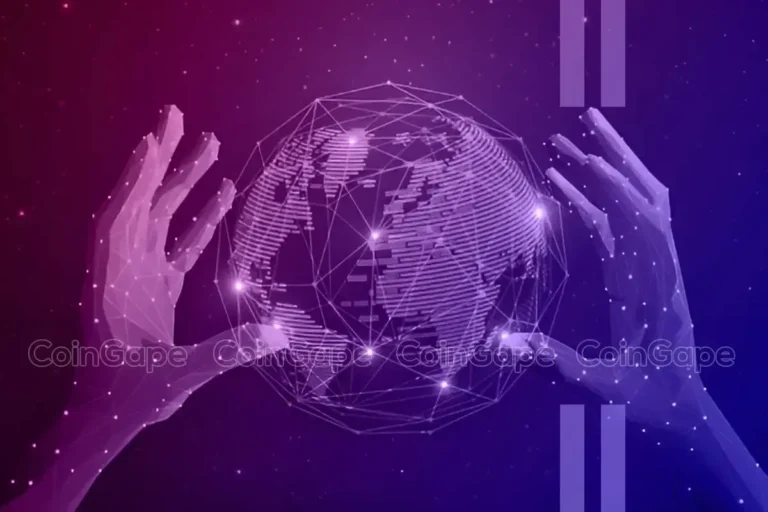You would be forgiven for thinking that blockchain was only for the financial industry, especially when it first appeared in 2009. This is because this technology is presented as an alternative to the traditional financial sector. That’s fine. Bitcoin was going to revolutionize the way payments and transactions were made, and it was going to be possible on a blockchain platform.
However, over the years since then, we have realized that blockchain is much more than financial markets and the financial industry. We thought this technology could be applied as a solution to some of the challenges faced by other industries. Similarly, blockchain has introduced new concepts that have proven to be disruptive and important in today’s digital world. One such concept is Real-World Asset (RWA) tokenization.
Blockchain has served as the foundation for deploying/converting real-world assets into digital tokens on a decentralized, secure, and transparent ledger system. It is this ability of blockchain that bridges the gap between such traditional sectors and the digital world described in this article.
What is RWA tokenization?
RWA tokenization is the process of converting tangible real-world assets, such as art, real estate, merchandise, machinery, and bonds, into digital tokens. After being tokenized, they become a class of cryptographic tokens that represent tangible assets outside the digital world. Traditionally, these assets and financial tools are often inaccessible, but tokenization makes them available to everyone and available to individual investors through blockchain.
The tangible assets represented by RWA typically have intrinsic economic value and are widely accepted by individuals and businesses. This can be seen by looking at the numbers given to the sectors. As of this writing, the total value locked (TVL) of the RWA sector is $6.8 billion. One of the earliest forms of RWA was a stablecoin. Tether (USDT) was launched in 2014 and was designed to be pegged to the US dollar at $1. This dollar tokenization then created a stablecoin market worth $172 billion, with USDT accounting for 69.83%.
According to Binance research, the total amount of on-chain RWA has reached an all-time high of $12 billion (as of this writing, it is worth $7.8 billion excluding the $172 billion stablecoin market). Some of the world’s largest companies are participating in the RWA space. BlackRock is a clear example of this. The world’s largest asset manager with a $10 trillion asset portfolio recently partnered with Securitize to make traditional financial products available through digitization. BlackRock’s BUIDL currently leads the tokenized treasury category with a market capitalization of $539 million. BlackRock CEO Larry Fink said in an interview with Bloomberg Television that tokenization is a technological transformation of financial assets. BlackRock’s involvement in tokenization encouraged more asset management companies to tokenize their assets. For example, Franklin Templeton’s FOBXX is the second largest tokenized Treasury with a market capitalization of $410 million.
Transforming real estate through blockchain
The process involved in investing in traditional real estate can be very difficult. This involves a long and winding process of finding the right agent, preparing and listing your property, and hoping the right buyer will find you. These are all potential bottlenecks in finding and selling real estate. However, high brokerage (agent) costs, time-consuming and complex transactions, and limited liquidity are some of the biggest problems with the traditional real estate process. Blockchain now offers a better way to purchase real estate.
The basic idea of blockchain is to eliminate the need for intermediaries in transactions. This feature has had great effects in the real estate field. This eliminates the need for agents and completely transforms the market into a peer-to-peer (P2P) market where buyers and sellers transact directly. You can now buy properties directly from Lister without paying any finder fees or consulting fees to anyone. This is also done directly on the blockchain, reducing time and complexity. If both buyer and seller are satisfied with the terms of listing the asset, the transaction can be executed in one day. Propy is a platform that modernizes real estate transactions by automating the closing process. Propy automates the closing process for everyone involved in real estate, making it faster, easier, and more secure. The company helps execute real estate transactions using cryptocurrencies.
Blockchain technology in the real estate sector is also solving problems associated with limited liquidity. Buying real estate like a house or land is very capital intensive, so not many people can play in that space. Blockchain is trying to change this. Fractional ownership allows you to get the property you want without spending more than you can afford or missing out because you don’t have the full amount. Imagine owning a tenth of a $1.5 million+ apartment in Manhattan for just $150,000 or investing in a Van Gogh masterpiece for just $100. These are not far-fetched ideas and are being realized today with the help of blockchain.
Environmental impact on investment
The sustainable finance market size is valued at $5.4 trillion in 2023. It is estimated to reach $31.1 trillion by 2032, growing at a CAGR of 22% from 2024 to 2032. This growth is being driven by increasing environmental awareness among governments and people. problem. For a long time, sustainable investing has lacked transparency. This makes it difficult for individual investors to understand the environmental impact of their investments. Blockchain technology is revolutionizing the sustainable finance niche and is a promising development in the fight against climate change. This is where innovative platforms like Minterra come into play. Minterra is building a climate-positive financial ecosystem based on blockchain technology that provides a hub for safe, reliable and innovative investment solutions, backed by real assets and a strong environmental commitment. I will. The platform provides investors with an investment method that generates profits and contributes to environmental protection.
Bridging Web2 and Web3
Implementing Web3 technology faces challenges such as jargon, poor user experience, and regulatory concerns. These challenges have made the blockchain industry difficult for developers to work with. Regulations can guide the industry, but they can also create new problems. For example, if one of the driving principles of blockchain is the removal of intermediaries from financial transactions, the introduction of regulatory tools like know-your-customer (KYC) could undermine this.
Joinn is a project that steps into this glaring gap in seamlessly adopting Web3 technologies from a Web2 background. Joinn leverages advanced blockchain technology hidden in the backend to ensure a seamless and secure user experience, making the complexities of Web3 as familiar as familiar Web2 applications. By operating under a regulated framework, Joinn provides access to on-chain RWA and USDC via Mastercard for retail and institutional users.
The future of asset tokenization
The tokenization of real-world assets has opened up opportunities for investing in traditional assets such as real estate, securities, and fine art. This process has become more accessible and efficient, allowing investors to easily access products and intellectual property that were previously difficult to trade. The future of tokenization includes:
New investment avenues beyond traditional assets A clearer regulatory framework for tokenized assets Access to tokenized assets from around the world Interoperable protocols across different blockchain networks to facilitate smoother trading of tokenized assets and streamline processes to improve connectivity within the market.
conclusion
This article shows how blockchain technology is disrupting traditional systems and creating a more inclusive and efficient world. Innovative platforms like Propy are revolutionizing the way real estate transactions are done, Mintera’s unique approach to environmental finance, Joinn’s seamless offering that helps integrate the power of Web3, and the true potential of blockchain technology. It shows us sexuality. These projects solve real-world problems that impact people’s daily lives, and this is what blockchain is all about.


